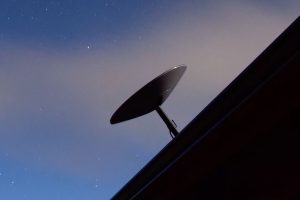- 🚀 SpaceX reported that Starlink satellites perform roughly 275 collision-avoidance maneuvers daily.
- 📅 In the past six months, each Starlink satellite fired its thrusters 14 times on average.
- 🌍 SpaceX currently has 6,200 active Starlink satellites orbiting Earth.
- 💥 There have been approximately 50,000 collision-avoidance maneuvers between December 1, 2023, and May 31, 2024.
- 🔼 The number of maneuvers has doubled compared to the previous year due to lower maneuvering thresholds.
- 🌐 SpaceX aims to build a megaconstellation with up to 42,000 satellites to provide global high-speed internet.
- 📈 The frequency of evasive maneuvers has doubled every six months since the first Starlink launch.
In the ever-expanding universe of satellite telecommunications, SpaceX has established itself as a formidable player with its Starlink constellation. Providing high-speed internet across the globe is a cornerstone of their mission. But with great ambition comes great responsibility. Recent reports have highlighted a fascinating yet challenging aspect of SpaceX’s operations: collision-avoidance maneuvers. This blog post delves into the nugget of information provided by SpaceX and examines what this means for the future of orbital management.
The Intricacies of Satellite Collision Avoidance
In a recent report, SpaceX revealed that its Starlink satellites are engaged in approximately 275 collision-avoidance maneuvers each day. This statistic, astonishing in its magnitude, raises crucial questions about the complexity of managing an increasingly congested low Earth orbit (LEO).
Collision-Avoidance: The Numbers
- 275 Daily Maneuvers: On average, the Starlink satellites collectively perform around 275 avoidance maneuvers daily.
- 14 Thruster Firings: Over the past six months, each Starlink satellite fired its thrusters approximately 14 times to avoid potential collisions.
- 50,000 Maneuvers in Six Months: Between December 1, 2023, and May 31, 2024, this amounts to roughly 50,000 collision-avoidance maneuvers for the entire constellation.
- Doubling Maneuvers: The frequency of these maneuvers has doubled compared to the same period a year earlier, primarily due to reduced maneuvering thresholds.
The Exponential Reality of Space Traffic
SpaceX currently operates 6,200 active Starlink satellites, with plans to launch up to 42,000 satellites to create a ‘megaconstellation.’ This massive deployment aims to provide global high-speed internet, but it also significantly contributes to space congestion.
The Past, Present, and Future:
- First Four Years: In the first four years following the initial launch, the number of evasive maneuvers conducted by Starlink satellites has doubled every six months.
- Recent Stability: Despite the increasing number of satellites, the number of maneuvers remained stable between May and December 2023, indicating a refinement in operational thresholds and maneuver protocol.
- Projected Growth: The ambitious goal of deploying up to 42,000 satellites underscores the need for innovative collision-avoidance technologies and improved space traffic management.
How Does SpaceX Manage These Maneuvers?
So, how does SpaceX manage this intricate ballet of satellite traffic?
Advanced AI and Automation
SpaceX leverages advanced artificial intelligence and automation to predict potential collisions and execute maneuvers. The system continually tracks the satellites’ positions and those of other objects in orbit, adjusting trajectories as needed.
Lower Maneuvering Thresholds
Lowering the thresholds for initiating maneuvers means that the system can respond more proactively, reducing the risk of last-minute evasive actions.
Collaborative Space Traffic Management
SpaceX collaborates with other satellite operators and organizations like the U.S. Space Surveillance Network to share data and enhance overall space safety.
The Implications of Increased Satellite Deployments
Orbital Traffic and Safety Concerns
As the number of deployed satellites increases, so does the complexity of maintaining safe orbital distances. With multiple operators launching constellations, international cooperation and stringent regulations will be essential.
Enhanced Internet Coverage
The envisaged megaconstellation of 42,000 satellites will mean unparalleled global internet coverage, bringing connectivity to even the remotest areas.
Innovation in Space Technologies
This endeavor will inevitably spur innovation in space technologies, from more fuel-efficient thrusters to better space debris tracking systems.
Conclusion
SpaceX’s commitment to managing its Starlink constellation showcases the challenges and triumphs that come with operating on the final frontier. As the company continues to expand its satellite network, the importance of effective collision-avoidance strategies cannot be overstated. With innovation at its core, SpaceX is not just navigating the stars but also leading the way toward a safer and more connected world.
By understanding how SpaceX manages these daily maneuvers and the broader implications for space safety and connectivity, we gain valuable insights into the future of satellite technology and orbital management.




